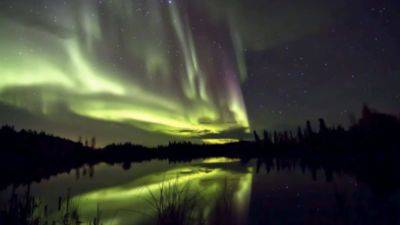Solar winds have been part of the reason behind the recent series of solar storms that have struck the Earth in the last couple of weeks. They either sparked solar storm incidents or amplified an active storm. But often, we tend to overlook its potential to cause damage when compared to solar flares and coronal mass ejections (CME). However, as per NASA officials and research papers, these stellar winds are capable of not only sparking solar storms but also triggering forest fires, and damaging spacecraft, potentially putting the lives of astronauts in danger.
NASA News, Tips, Tricks & Ideas
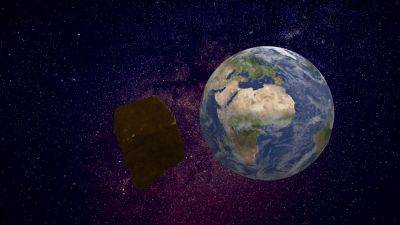
Asteroid bigger than Airbus A380 to pass Earth; Know details revealed by NASA
Using its various advanced ground and space-based telescopes such as the NEOWISE telescope, Pans-STARRS1 and Catalina Sky Survey, NASA has shed light on an asteroid that is expected to pass Earth by a close margin today, November 14. It is just one of the 298148 asteroids that have been discovered to date. According to the space agency, the asteroid, given the designation Asteroid 2023 VR4, is travelling in its orbit at a breakneck speed of 37902 kilometers per hour. From size to distance of approach, know all about this close encounter with Asteroid 2023 VR4.

Surprise! Oxygen detected on Venus in huge quantities on this hellish planet
In a surprising twist, German astronomers have uncovered the presence of oxygen in Venus's atmosphere, challenging the conventional understanding of the planet's composition. The revelation, which spans both the day and night sides of Venus, could hold key insights into the stark differences between Earth and its so-called "Second self." Despite Venus being Earth's closest neighbour and sharing a strikingly similar size, with a radius of 6,052 km compared to Earth's 6,371 km, the two planets have notably distinct atmospheres. While that of the Earth has encouraged life to flower, that on Venus is exactly the opposite and can well be described as 'hellish'. In fact, Venus is known as the 'evil twin' of Earth.
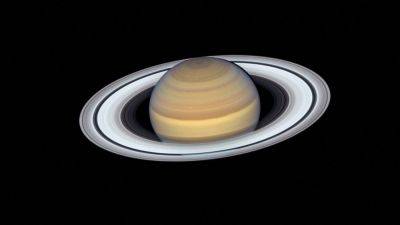
Shocking space! Saturn rings will disappear!
In 1610, the visionary astronomer Galileo Galilei marvelled at the celestial beauty of the Saturn rings, describing them as resembling "ears." Fast forward to the present day, and these once-distant wonders are now observable to anyone with basic astronomical equipment. However, the clock is ticking on this cosmic spectacle, as recent findings suggest that Saturn rings are on the verge of disappearing from view within the next 18 months.
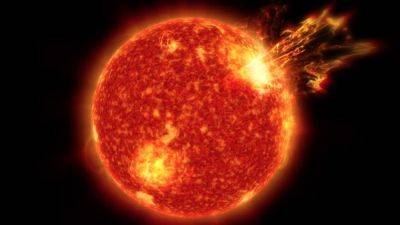
Earth to suffer direct CME hit, new NASA model reveals; To spark solar storm and auroras
Yesterday, the NASA Solar and Heliospheric Observatory (SOHO) detected a coronal mass ejection (CME) that appeared to be coming towards the Earth. The early assessment revealed that it could hit the Earth in the late hours of November 11, although it wasn't clear whether the strike would be a direct one or a glancing blow. Earlier today, NASA ran the data through its prediction model and we have a much clearer picture of what is to come. The CME is now expected to hit the Earth tomorrow, November 12. It is also expected to be a head-on collision, and the solar storm can reach an intensity of G2-class.
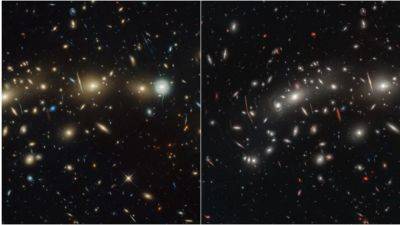
NASA's James Webb Space Telescope, Hubble Space Telescope reveal dance of galaxies
In an extraordinary cosmic collaboration, NASA's James Webb Space Telescope and the Hubble Space Telescope have partnered to explore the vastness of a distant galaxy cluster and they have unveiled a mesmerising and vibrant panorama of the universe. This groundbreaking venture, capturing the galaxy cluster known as MACS0416, employs a fusion of visible and infrared light, producing one of the most extensive snapshots of the universe to date.

SpaceX Dragon successfully launches 29th commercial resupply mission for NASA to ISS
NASA with SpaceX's Dragon spacecraft successfully launched its 29th commercial resupply mission yesterday from launch Complex 39A at NASA's Kennedy Space Center in Florida at 8:28 pm EST on November 9, 2023. The resupply includes various scientific experiments and technology demonstrations along with optical communications and measurement of atmospheric waves was shipped to the International Space Station. Know what the resupply mission will deliver.

NASA SOHO spots CME headed for Earth tomorrow; Solar storm may spark auroras, radio blackouts
Even with just six Earth-facing active sunspots on the Sun, the solar activity in the last fortnight has been more intense than many months combined this year. This is the second most intense solar storm spell we have seen since March when two G3-class storms were spotted in the same month. To make matters worse, it is not likely to stop anytime soon. The NASA Solar and Heliospheric Observatory (SOHO) has detected a halo-shaped coronal mass ejection (CME) headed towards the Earth. The data highlights that it will make strike the Earth tomorrow, November 11, in the late hours, triggering a solar storm that can be as intense as G2-class.
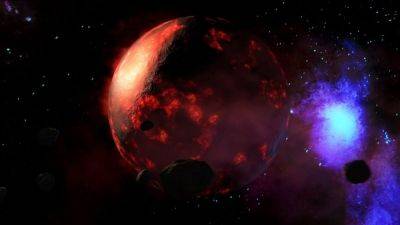
House-sized asteroid to pass Earth at close quarters today, get as near as 4.2 mn km, NASA says
With the help of its advanced ground and space-based telescopes, NASA has tracked an asteroid whose orbit will bring it very close to Earth today. The orbits of these asteroids, which are also known as ancient space rocks, often bring them very close to Earth, and this is known as a ‘close approach'. As per the Center for Near-Earth Object Studies (CNEOS), an asteroid, given the designation of Asteroid 2023 VT3, is on its way and could make its closest approach to Earth today, November 10.

Amazing aurora after solar storm strike! Just check out this NASA image of Utah sky from ISS
Prepare to be captivated by the latest visual treat from NASA as the space agency has unveiled a breathtaking image of an aurora taken from the International Space Station (ISS) after a solar storm strike. The celestial spectacle unfolded above Utah, USA, on a Sunday night, casting a radiant green glow that painted the night sky with an otherworldly charm.

Amazing tech! James Webb Space Telescope revealed secrets of Earth's formation, NASA says
The James Webb Space Telescope (JWST) has made a groundbreaking discovery, offering insights into the ancient origins of our planet. By observing two young stars' planet-forming disks in the Taurus star-forming region, located 430 light years away, James Webb Telescope detected a chilly "steam" or excess water vapour.
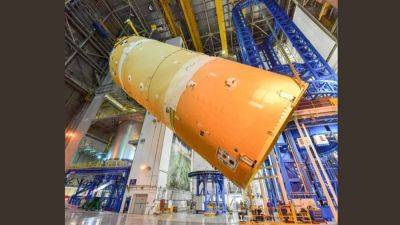
Boeing powers historic lunar exploration with SLS, scripts new chapter in NASA's Artemis program
In the world of human space exploration, Boeing has stood as a big force, propelling advancements for over six decades. Now, with the NASA Artemis program, Boeing is set to make history by contributing to the landing of the first woman and the first person of color on the Moon. This ambitious initiative also marks a significant stride towards sustainable lunar exploration, covering more of the lunar surface than ever before.

Dream Chaser spaceplane to resupply the ISS will now face the final NASA testing
Commercial space tech is still a relatively new field. Before the turn of the century, space exploration and technology development were only handled by government-funded space agencies, such as NASA, ROSCOSMOS, JAXA, and ISRO, that worked to use the knowledge from various missions to help their respective nations. It was only after the entry of Elon Musk's SpaceX, Jeff Bezos founded Blue Origin and Richard Branson led Virgin Galactic, that people began looking at space tech as an entrepreneurial venture. However, even in 2023, a lot of its potential still remains to be uncovered. Case in point — Sierra Space's Tenacity, the company's first Dream Chaser spaceplane, which will used to resupply the International Space Station (ISS)
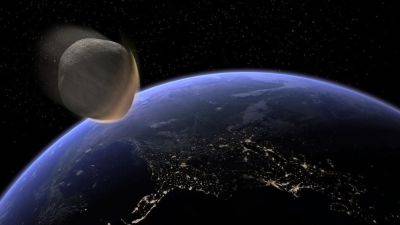
91-foot asteroid to pass Earth today; it will come as close as 2.4 mn km to our planet
On November 1, NASA's Lucy spacecraft flew by its first-ever asteroid target, named Dinkinesh. The asteroid was observed up close by the spacecraft which made a shocking new discovery - the Dinkinesh asteroid had a small satellite orbiting it! There is more to this than just that. After fully studying the data sent by the Lucy spacecraft, scientists have revealed that the satellite is not made up of one, but two smaller objects touching each other. This is known as a close binary.
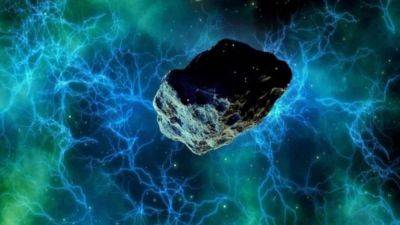
NASA says Apollo group asteroid will fly past Earth today
Through various experiments, scientists have known that while asteroids have the potential to cause catastrophic damage if they impact Earth, these objects can also become a resource hub. Scientists study asteroids to learn more about the early solar system and the conditions that existed when the planets were forming. However, an entirely new experiment could mean that asteroids may also protect Earth from the Sun's intense rays, mitigating climate change! This move, ideated by astronomer Istvan Szapudi, from the University of Hawai'i Institute for Astronomy, proposes a space-based solar radiation management (SRM) shield or shade that is tethered to an asteroid as a counterweight.
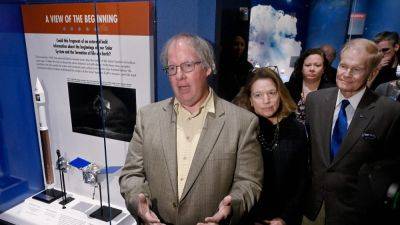
NASA's OSIRIS-REx asteroid Bennu sample unveiled at the Smithsonian museum
In September, NASA reached a unique milestone when its ambitious project, the OSIRIS-REx mission, was completed successfully. The spacecraft traveled 6.2 billion kilometers to meet an asteroid named Bennu in deep space, collected samples, and then delivered them to the Earth. These samples, collected for the first time ever by humanity, are expected to answer some of the biggest questions around the origin of the Earth, the life of the planet, and the solar system itself. And now, a small piece of this sample has been placed in the iconic Smithsonian's Museum of Natural History so that people can come and appreciate the historic feat.

Two asteroids to pass Earth at extremely close distances! Know details
Asteroids are ancient space rocks left over from the early formation of our solar system about 4.6 billion years ago, according to NASA. These space rocks orbit the Sun and are mainly present in the asteroid belt located between Jupiter and Mars. On a few occasions, the orbits of these asteroids bring them close to Earth, a phenomenon known as a ‘Close approach'. NASA has various space and ground-based telescopes to discover and track asteroids in the sky. With the help of this advanced technology, the space agency has revealed that not one but two asteroids will pass Earth today, November 7, at extremely close distances! Know all about it.

150-foot asteroid to come as close as 5.8 mn km today, reveals NASA
Did you know that you can see the asteroid sample collected by NASA up close? The NASA OSIRIS-REx spacecraft recently concluded a historic mission that involved landing on an asteroid, taking rock and dust samples, and delivering them back to Earth. Although NASA had initially run into trouble while opening the sample capsule, it has now obtained them, and a part of it has even been put up on display at the Smithsonian National Museum of Natural History in Washington DC! So, go ahead and view the historic samples yourself if you live nearby!
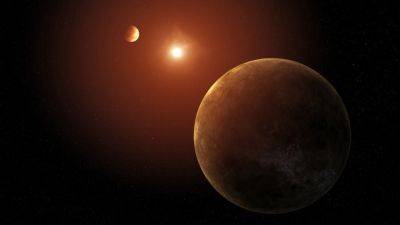
NASA’s Kepler Telescope reveals 7 searingly hot exoplanets orbiting a star
You may have heard a lot about the iconic Hubble Space Telescope and the famous James Webb Space Telescope, but NASA has an array of other telescopes that have rendered yeoman's service and one of them is the Kepler Space Telescope. NASA's Kepler Space Telescope, which retired in 2018, remains a source of scientific discovery as its data uncovers exciting revelations. A recent study led by a team of researchers has unveiled the existence of 7 scorching hot exoplanets orbiting a single star. These planets receive more intense heat from their star, per unit area, than any celestial body in our solar system.
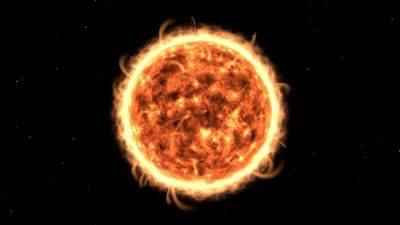
Sun's spectacular 'Canyon of Fire' on Halloween stuns scientists
The Sun has been acting up over the recent months and space scientists have been privy to some amazing sights. And now, yet another such spectacle has played out and this time during a festival. On October 31, Halloween took an astronomically awesome turn when the Sun threw up a colossal 'canyon of fire' stretching across its southern hemisphere. This mesmerising spectacle resulted from a massive eruption of a magnetic filament originating from our star, Spaceweather.com reported. This remarkable phenomenon quickly captured the attention of scientists and stargazers alike.
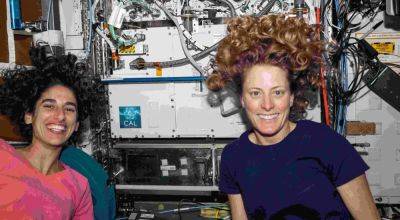
Historic! NASA astronauts Jasmin Moghbeli and Loral O'Hara take stunning spacewalk outside ISS
In a groundbreaking achievement, NASA astronauts Jasmin Moghbeli and Loral O'Hara embarked on their maiden spacewalk, forging history as the second-ever all-female astronaut duo to perform an Extravehicular Activity (EVA). This remarkable event took place on November 1 outside the International Space Station (ISS).

NASA reveals shocking twist in Asteroid Dinkinesh tale!
Two for the price of one! NASA has just made a shocking revelation. NASA's Lucy mission, designed to study Jupiter's Trojan asteroids which recently flew close by Asteroid Dinkinesh, revealed some surprising results. This Trojan asteroid had a huge secret that was finally exposed. The Lucy Mission spacecraft took images that found that the asteroid Dinkinesh is not just one asteroid. In fact, it is a binary pair floating in the orbit of Jupiter. Know more about the astonishing Asteroid Dinkinesh discovery here.

Aircraft-sized asteroid to pass Earth today, reveals NASA
An asteroid struck Earth this year! No, this isn't the plot of a Roland Emmerich science-fiction but reality. Although it wasn't a planet killer that wiped out entire species like another space rock wiped out the dinosaurs about 65 million years ago, it did impact the surface, alerting citizens who lived nearby. As per NASA, an asteroid turned into an atmospheric fireball on February 15 and crashed near McAllen, Texas. Law enforcement agencies in the McAllen region received several calls from residents who reported hearing a loud explosion. It was a 1000-pound rock that was 2 feet in diameter as it broke into pieces about 21 miles above Earth's surface.

NASA detects CME rushing out of ‘canyon of fire’; Solar storm could strike on Nov 4
No solar storm strikes were seen on Halloween, thankfully. Most astronomy enthusiasts must remember the 2003 solar storm that struck on Halloween and resulted in NASA Solar and Heliospheric Observatory dropping altitude temporarily, and Sweden losing power for an hour. But trouble for the Earth is not over yet. A new coronal mass ejection (CME) was released as a result of a magnetic filament eruption on the region of the Sun known as the ‘canyon of fire'. NASA spotted it first, but its initial models predicted that it may miss the planet. But now, the National Oceanic and Atmospheric Administration (NOAA) forecast has said that it will sideswipe us, triggering a solar storm.

NASA Chandra, IXPE telescopes showcase stunning ghostly cosmic hand
The space is filled with mysteries, and no matter how many of them we uncover, finding something new still instills a feeling of awe. That is one of the reasons why space agencies such as NASA invest so much in space exploration. In 2021, it launched the Imaging X-ray Polarimetry Explorer (IXPE), a space observatory with three identical telescopes designed to measure the polarization of cosmic X-rays. Together with the NASA Chandra telescope, it has now discovered a stunning pulsar wind nebula. Named MSH 15-52, it resembles a bony human hand, and NASA is calling it the ‘ghostly cosmic hand'.
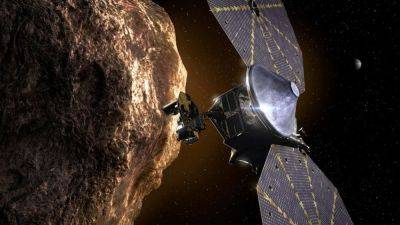
NASA's Lucy mission spacecraft will fly by asteroid Dinikinesh for the first time
Asteroids have posed a threat to Earth with their close approaches throughout history. While most of these ancient space rocks have passed the planet at close proximity, a few of them have impacted Earth, altering the course of history itself. Perhaps the most famous asteroid impact in history is the asteroid which struck Earth 65 million years ago and kicked off the extinction of dinosaurs. Therefore, it is imperative that we discover and study these space rocks up close to minimize any uncertainties around their close approaches and predict any potential impact. This is where NASA's Lucy mission comes in.
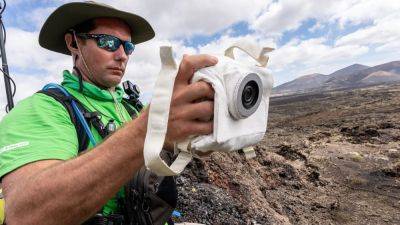
NASA and ESA scientists to bring next generation camera for future Moon missions
New technologies and innovations have helped scientists to take the space missions to the next level. We have received various mesmerizing images of space till now with amazing high-definition cameras. Now, the NASA astronauts are prepping up to take the next generation camera to the Moon to capture the detailed images of the Lunar surface. European astronauts and scientists have come together with NASA's Artemis imagery team to complete this crucial task.
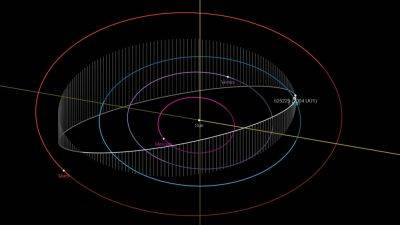
Statue of Unity-sized asteroid to pass Earth today, reveals NASA
There have been several close calls with asteroids in history. But did you know that not all asteroids have the same composition? According to NASA, the three primary classifications of asteroids are C-type, S-type, and M-type. C-type asteroids, which are composed primarily of carbon-rich substances, are the most frequent. S-type asteroids, which are made up mainly of silicate minerals, are less common. M-type asteroids, which are primarily composed of metal, are the least prevalent. One rare asteroid has recently piqued the interest of scientists as it is reportedly made of gold, silver and nickel deposits!
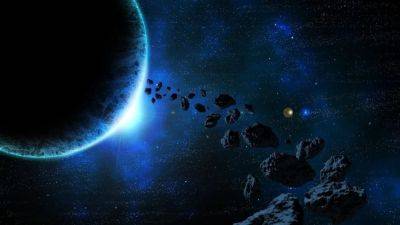
620-foot asteroid to pass close to Earth tomorrow! NASA reveals distance, speed, and more.
NASA keeps a regular check on the Asteroids passing close to the Earth. Asteroids have posed a potential threat to Earth for millions of years now. That is why it is extremely important that we prepare for all eventualities. Stopping an asteroid is impossible at the last moment, but we can take preventative measures and that is why space agencies like NASA keep a watch on all asteroids approaching Earth. In a journey to track asteroids, NASA has successfully executed the DART mission where it was able to divert an asteroid from its path. Now, NASA has tracked a gigantic asteroid traveling close to Earth. Check out the details below:
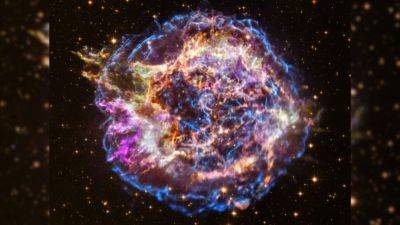
In a first, IXPE telescope has revealed Supernova secrets, says NASA
Supernova's have been some of the most spectacular space events ever to happen in the Universe. They are massive in nature and even more amazing in terms of their gigantic nature. Now, in a groundbreaking discovery, NASA's Imaging X-ray Polarimetry Explorer (IXPE) telescope has unveiled the mysteries shrouding the historic supernova remnant, SN 1006. The telescope's first-of-its-kind polarized X-ray images have illuminated the enigmatic connection between magnetic fields and the flow of high-energy particles from exploding stars.
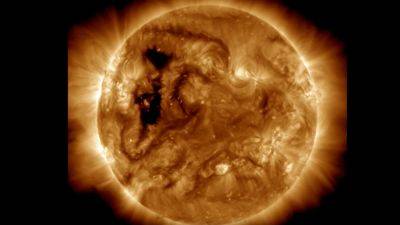
Solar storm strike possible soon, as solar wind stream rushes towards Earth; NASA reveals its origin
Just a couple of days ago, a sneaky solar storm struck the Earth, sparking auroras in the Arctic Circle. The reason for the storm was not known since no coronal mass ejection (CME) was expected to hit the planet. It turned out that a crack opened up in the magnetosphere, allowing solar radiation to easily pass through. Now, another similar incident is on the cards, only at a much higher intensity. A massive hole has opened up on the Sun this time which is releasing a stream of solar winds. It is expected to reach the Earth on October 30, when it can trigger a solar storm, as per the forecast. The NASA Solar Dynamic Observatory images show the hole through which solar winds are escaping.
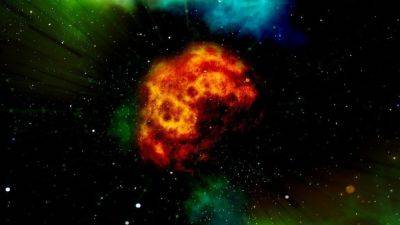
Chelyabinsk asteroid-sized space rock to pass Earth at very close quarters today
According to NASA, an asteroid, given the designation of Asteroid 2023 UV6, is on its way towards Earth and will pass the planet at a close distance today, October 27. The asteroid was discovered by NASA's Defense Coordination Office (PDCO), which is responsible for monitoring the skies and keeping a watch on various Near-Earth Objects (NEOs). Asteroid 2023 UV6 is expected to pass the planet at a distance of 3.9 million kilometers while travelling at a speed of 26329 kilometers per hour, as per the space agency. Here's all about Asteroid 2023 UV6.

Life on Mars? Curiosity rover raises NASA hopes
Recent findings from NASA's Curiosity rover have revealed intriguing evidence of Mars once harboring conditions suitable for life. A team of geologists, utilizing data from Curiosity's explorations, examinations of sedimentary rock beneath the Gulf of Mexico, and computer simulations, have identified signs of ancient river systems in several Martian craters.
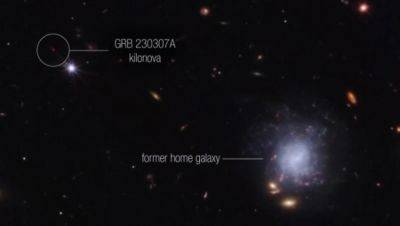
James Webb Space Telescope unveils cosmic secrets, discovers tellurium in rare neutron star merger
A recent study by NASA, involving the observation of an exceptionally bright gamma-ray burst (GRB 230307A) was conducted by a team of scientists using various space and ground-based telescopes, including NASA's James Webb Space Telescope, Fermi Gamma-ray Space Telescope, and Neil Gehrels Swift Observatory.

Nancy Grace Roman Space Telescope: NASA set to solve many secrets of the Universe
The Nancy Grace Roman Space Telescope, set to launch around May 2027, will provide a groundbreaking view of the Milky Way Galaxy. This NASA mission aims to monitor hundreds of millions of stars in search of subtle flickers that indicate the presence of celestial objects, including exoplanets, distant stars, icy objects in our solar system, black holes, and more.
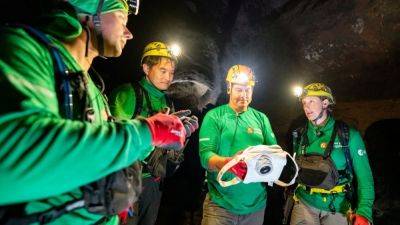
ESA, NASA join hands to test next-gen camera for Moon mission
After almost 40 years, NASA is finally going back to the Moon with its Artemis program. 3 missions have been planned as part of this latest attempt to touch down on the lunar surface. The Artemis 1, which launched on November 16, 2022, was an uncrewed flight test of the Space Launch System and the Orion spacecraft around the Moon. The Artemis 2 will be a crewed test flight, while the Artemis 3 will carry a crew that will aim to explore the region near the lunar South Pole. To capture the lunar surface, the European Space Agency (ESA) is helping NASA develop a next-generation camera.
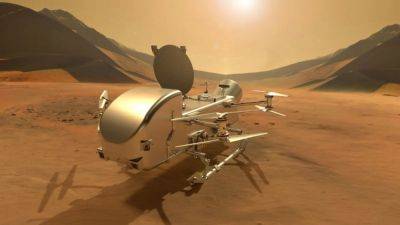
NASA preparing nuclear-powered drone for mission to Saturn’s moon Titan
Not just the Moon, but NASA has been sending missions to asteroids, other planets, and even other moons in the solar system as of late. The US space agency recently launched the Psyche mission to a metal-rich asteroid, while the collected samples from the Bennu asteroid also returned to Earth last month. It has also been working on the Artemis program, NASA's first manned lunar mission since Apollo 17. However, perhaps the most ambitious mission is the Dragonfly, the first-ever mission to the surface of another ocean world. As part of it, NASA will send a spacecraft to Titan, Jupiter's largest moon.
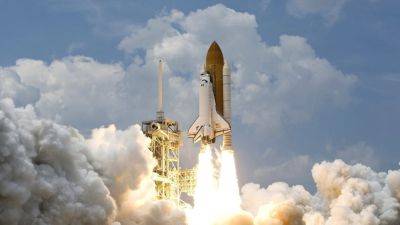
NASA develops aluminum rocket nozzles using 3D printing technology!
NASA, in collaboration with Elementum 3D, has developed a groundbreaking aluminum rocket engine nozzle using additive manufacturing technology, also known as 3D printing. The nozzle is part of NASA's RAMFIRE (Reactive Additive Manufacturing for the Fourth Industrial Revolution) project, funded under NASA's Space Technology Mission Directorate (STMD).

NASA turns asteroid hunter again! Here is what Psyche spacecraft is looking for
NASA's Psyche spacecraft has been successfully launched, embarking on a groundbreaking mission to explore an asteroid of the same name, which is a metal-rich world that holds the potential to shed light on the formation of rocky planets.
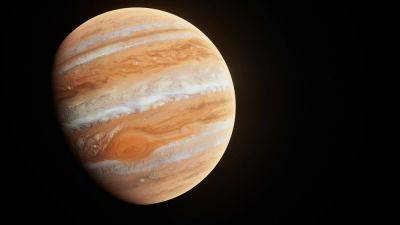
James Webb Space Telescope finds a jet stream in Jupiter's atmosphere
The James Webb Space Telescope, NASA's cutting-edge space observatory, has made a remarkable discovery in Jupiter's atmosphere, uncovering a previously unseen high-speed jet stream.

1200-foot asteroid to pass Earth today, says NASA; it is as big as the Empire State Building
NASA tracks asteroids using a combination of ground-based and space-based telescopes. The NASA-funded Asteroid Terrestrial-impact Last Alert System (ATLAS), scans the night sky for moving objects and reports any potential asteroid detections, while some space-based observatories use infrared sensors to detect asteroids and their characteristics. Some of these include the Wide-field Infrared Survey Explorer (WISE) and the NEOWISE mission. Using these advanced instruments, the space agency has revealed information about a 1200-foot Potentially Hazardous Asteroid that is set to pass Earth today. Know all about it.

Solar storm barrage strikes Earth! NASA reveals massive impact effect
The solar storm event on October 20 has become somewhat of a mystery to astronomers and space weather physicists. The storm was triggered by a couple of coronal mass ejections (CME) that sideswiped the Earth and did not make head-on contact with the planet. They left the Sun one after the other in small eruptions, that should not have been carrying a high amount of solar matter or electromagnetic charge, but somehow its impact was far greater than some of the strongest CMEs we have seen in recent times. This is quite confusing as most forecasters had predicted a G1-class intensity for the storm, and while the storm itself was clocked at G1, the aurora display surpassed the intensity seen in that category. And now, a NASA image has been shared by a National Oceanic and Atmospheric Administration (NOAA) institute that shows the widespread impact of the solar storm.

Geomagnetic storm sparks breathtaking auroras; Know details of CME impact
The intensity of the Sun's activity has been rising in the last few months, and it is expected to increase even more as we approach the solar maximum. During this period, solar activity is at its peak, resulting in more solar flares, CMEs, solar storms and geomagnetic storms. All these solar phenomena hold the potential to cause damage on Earth. Technological instruments are especially at risk during these events, resulting in power blackouts and even disruption of radio communication.
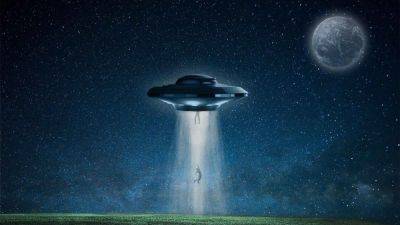
Carl Sagan detected life on Earth 30 years ago – here’s how his experiment is helping us search for alien species today
It's been 30 years since a group of scientists led by Carl Sagan found evidence for life on Earth using data from instruments on board the Nasa Galileo robotic spacecraft. Yes, you read that correctly.
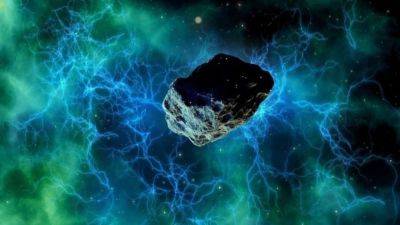
120-foot Asteroid 2023 UR1 to pass close to Earth today; know what NASA revealed
Do you know how many asteroids NASA scientists have tracked to date? Approximately 1,298,148 asteroids have been identified by NASA. The space agency employs a range of advanced ground and space-based telescopes for tracking and researching these cosmic rocks, primarily concentrated within the asteroid belt situated between the orbits of Mars and Jupiter. Telescopes and observatories such as NEOWISE, the Atacama Large Millimeter/submillimeter Array (ALMA), Pan-STARRS1, and the Catalina Sky Survey play pivotal roles in the study of asteroids and the mitigation of uncertainties surrounding their close encounters with Earth.
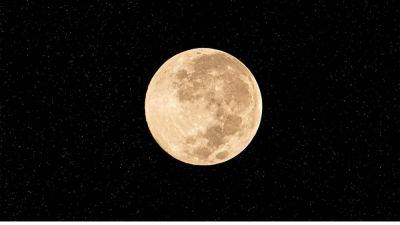
International Observe the Moon Night event: NASA shows when, where and how to watch event
Have you ever heard of an event where people from all over Earth gather together just to observe the Moon - virtually? Well, every year NASA organizes International Observe the Moon Night, which is an annual public event and it is sponsored by the Lunar Reconnaissance Orbiter Mission, the Solar System Exploration Division at NASA's Goddard Space Flight Center, and other NASA and astronomical organizations. Know when and where can you watch this Moon event:
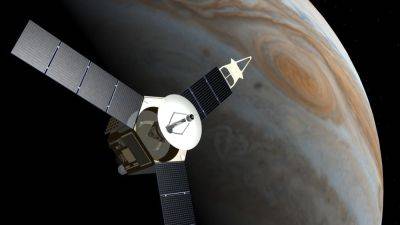
NASA’s Juno flyby provides an extraordinary view of Jupiter moon Io's surface
NASA's Juno spacecraft was designed to explore the wonders of the giant planet Jupiter. Over the years, the spacecraft has given us some interesting facts about the planet and its moons and now it captured a mesmarizing image of Jupiter's fourth moon called Io during a flyby. The image showed traces of massive volcanic activities and lava-like surfaces.
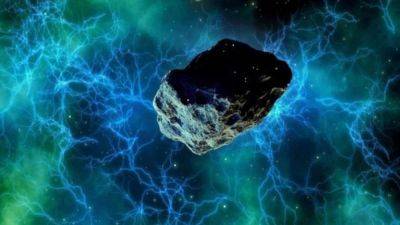
Apollo asteroid to pass Earth today, reveals NASA
For years, it has been known that the most likely cause of the extinction of dinosaurs was an asteroid impact. The most common theory behind the extinction is the Alvarez hypothesis, which claims that an asteroid struck Earth nearly 65 million years ago and wiped out entire species of dinosaurs. This theory is backed by some proof too as scientists have also discovered its impact crater, known as the Chicxulub crater, buried under the Yucatan Peninsula in Mexico. As per the hypothesis, the impact of the asteroid would have caused the formation of huge tidal waves and an impact crater almost 140 km wide. Lland material would have splattered into space, changing the Earth into a nuclear winter-like environment, ultimately leading to the demise of dinosaurs.
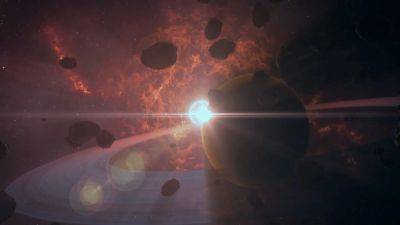
Apollo group asteroid to come closer than the Moon; Know details of approach
NASA has recently issued details about an asteroid designated as Asteroid 2023 TK15 that is expected to make its closest approach to Earth on October 20. This asteroid has been discovered and tracked using various advanced technological instruments such as the NEOWISE telescope, Atacama Large Millimeter/submillimeter Array (ALMA), Pans-STARRS1 and Catalina Sky Survey. Know all about it.
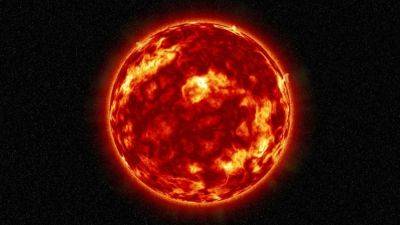
Magnetic filament eruption on the Sun may spark solar storm tomorrow, says NASA
On Monday, October 16, a powerful magnetic filament erupted on the Sun. In particular, the explosion of plasma took place on the active sunspot AR3467, which was earlier reported to have displayed signs of trapping a huge amount of delta energy. The eruption was so massive that it ejected solar matter and plasma into space, which is also known as coronal mass ejection (CME). The CME is now moving in the direction of Earth. While NASA models have assured that a direct hit is unlikely at this point, it is expected to sideswipe the planet, which is still enough to spark a solar storm. The storm is expected to arrive tomorrow, October 19.
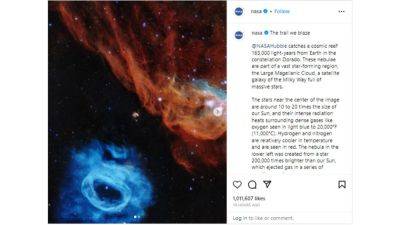
NASA Hubble Space Telescope captures mesmerizing images of Cosmic Reef
Yet again, NASA has mesmerized the world with its beautiful images of the space glories. The NASA Hubble space telescope is known for studying and capturing images of celestial objects that are present in our galaxy and beyond. Over the years, we have seen its abilities and despite being an observer of the near space for decades, it continues to bring breathtaking images to us. Recently NASA shared images of a giant red nebula (NGC 2014) alongside its smaller blue companion (NGC 2020), which looks like a cosmic reef against the vast backdrop of the dark space. Check what the image captured by Hubble demonstrates.
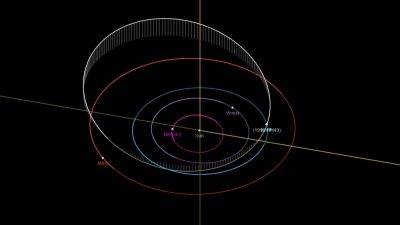
Potentially Hazardous Asteroid to pass Earth today! Know details
You may think asteroids are simply floating rocks in space and while it may seem so due to their appearance, it isn't quite the case. These space rocks can be classified into 3 types based on their structural composition. The most commonly found asteroids are S-type, which are made up of carbon-rich substances. On the other hand, S-type asteroids are made up mainly of silicate minerals and are less common. M-type asteroids are the least prevalent and they are primarily composed of metal. NASA recently sent out a mission to a metal-rich asteroid called 16 Psyche which is supposedly worth more than the whole planet's economy put together, at a staggering $10 quintillion!

600-foot asteroid to do a close flyby of Earth; NASA reveals size, speed, and more
Hazards like solar storms and asteroids constantly appear and pose threats to our planet. NASA diligently monitors Near-Earth Asteroids (NEAs) to safeguard our planet from potential impacts. When NASA's telescopes detect a new NEA, precise observations of its position in the sky are reported to the Minor Planet Center. Subsequently, the Center for Near-Earth Object Studies (CNEOS) utilizes this data to establish the most likely orbit of the asteroid around the Sun. To evaluate the risk of impact and the asteroid's orbit, NASA employs the innovative Sentry II system, featuring a unique algorithm. Sentry II strategically selects random points within the entire uncertainty region, enabling the program to pinpoint very low-probability impact scenarios. Recently, NASA has issued an alert concerning a colossal asteroid that is approaching Earth tomorrow:
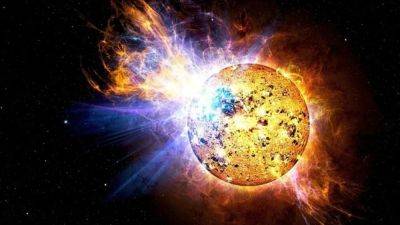
Sunspot could hurl out M-class solar flares, reveals NASA
Like asteroids, solar flares also pose a threat to Earth. Strong solar flares can cause power and radio blackouts for several hours or even days, spark auroras, give people in airplanes a dose of radiation and can even influence elections! Technological instruments are especially at a risk during flares. This is because when cosmic rays strike Earth, they release various particles like energetic neutrons, muons, pions and alpha particles. Although these particles do not affect the human body, they can pass-through integrated circuits and cause damage, often changing the data stored in the memory. With the solar maximum approaching in the next few years, the Sun's activity is expected to rise, and it could result in more solar flares.

Asteroid 2023 TT8 to get very close to Earth today, NASA reveals
Asteroids are abundant in space and as many as 1298148 have been discovered to date. To track and study these space rocks which are mainly present in the asteroid belt between the orbits of Mars and Jupiter, NASA has several advanced ground and space-based telescopes in place. NEOWISE telescope, Atacama Large Millimeter/submillimeter Array (ALMA), Pans-STARRS1 and Catalina Sky Survey are just some of the telescopes and observatories that help study asteroids and remove any uncertainties around their potentially close approaches to Earth.

48-foot asteroid to get very close to Earth today, NASA says
NASA maintains a vigilant eye on the cosmos to track, monitor, and study each and every asteroid in space that comes near Earth. This crucial endeavor involves a combination of space telescopes and ground-based observatories, including the renowned Hubble Space Telescope. As of now, there are 1,298,210 known asteroids that have been checked. While there are no immediate threats from asteroids to Earth, but they can still wreak havoc in the future. Therefore, tracking them is the only solution to avoid any calamities. Recently, NASA has revealed an asteroid, set to pass by Earth. It is designated as the asteroid 2023 TC7. Read on to know more about this asteroid approaching close to the Earth:
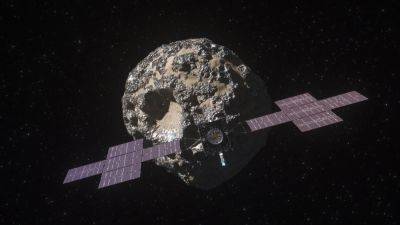
Lift-off! NASA chases Psyche Asteroid
In a historic moment, NASA's Psyche Asteroid probe embarked on a groundbreaking journey to a space rock laden with rare metals. This remarkable NASA mission represents the first-ever exploration of a metallic world, diverging from the conventional rocky or icy compositions of most asteroids. Scientists believe that this enigmatic celestial body could unlock insights into the elusive cores of Earth and other rocky planets, speculating that it might be the remnants of an ancient planet.

635266kmph! NASA sets new speed record with Parker Solar Probe! Craft turns fastest human-made object
In the depths of space, the Parker Solar Probe, launched by NASA in 2018 to explore the Sun, has achieved a remarkable milestone. Racing around our star at an astonishing speed of 635266kmph, it has become the fastest human-made object in history, surpassing the legendary SR-71 Blackbird by nearly 180 times.

Western Hemisphere readies for a 'Ring of Fire' eclipse
Skygazers across the Americas are in for a celestial treat on Saturday: an annular solar eclipse.
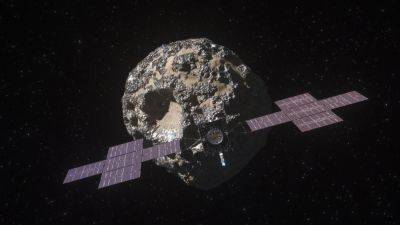
Five things to know about NASA's mission to a metal world
For the first time ever, a NASA probe is journeying to an object composed not of rock, ice, or gas, but metal: the asteroid Psyche.

House-sized asteroid hurtling towards Earth for close approach, NASA reveals
With its advanced tech such as the NEOWISE telescope, Atacama Large Millimeter/submillimeter Array (ALMA), Pans-STARRS1 and Catalina Sky Survey, NASA has revealed details about an asteroid that will come close to Earth. An asteroid, given the designation of Asteroid 2023 TC1, is on its way towards Earth and could make its closest approach to the planet today, October 13.
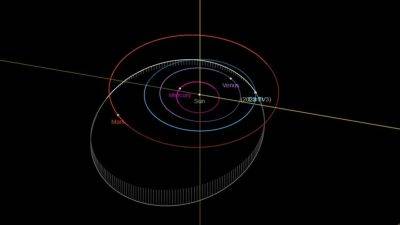
Wow! Asteroid 2023 TV3 to pass Earth 4 times closer than the Moon! Know details
NASA, ESA and other space agencies have a suite of ground and space-based telescopes and observatories to track and monitor asteroids. Despite the presence of these technological marvels, an asteroid snuck past all of them! The asteroid, named Asteroid 2023 NT1, made its closest approach to Earth on July 13 when it entered Earth's 60,000-mile radius, which is 4 times closer than the Moon! It was not a small rock either, as scientists later revealed it was nearly 200 feet wide, about 4 times the size of the Chelyabinsk asteroid that caused massive damage in Russia. It was at last found by the Asteroid Terrestrials-Impacts Last Alert System (ATLAS) observatory in South Africa on July 15.

NASA detects massive sunspot that can trigger extreme solar storm activity
If you've been curious about the recent surge in solar activity, it's important to understand that scientists have forecast the upcoming peak of the current solar cycle for mid-2025. This peak, referred to as the Solar Maximum, signifies the period when solar activity reaches its zenith within the 12-year cycle. This also explains the occurrence of two distinct solar flare events in the last 24 hours, both of which resulted in radio blackouts on Earth. And now, NASA's Solar Dynamics Observatory (SDO) has spotted a troublesome sunspot with a strong delta charge that can explode anytime and hurl an Earth-directed coronal mass ejection (CME) to spark intense solar storm activity.
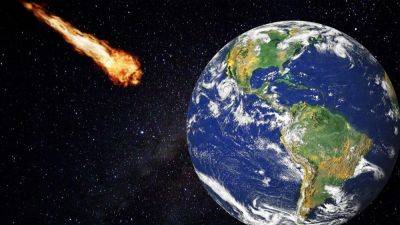
Asteroid hurtling towards Earth today at a mind-numbing 31394 kmph, reveals NASA
On September 8, 2016, NASA launched a historic mission - the Origins, Spectral Interpretation, Resource Identification, and Security-Regolith Explorer (OSIRIS-REx). It was launched to study a Potentially Hazardous Asteroid (PHA) called Bennu, which has a 1/2700 chance of impacting Earth between 2175 and 2195. After a 6-year journey that involved landing on the asteroid and collecting samples from its surface, the spacecraft finally returned the samples last month, after which they underwent a “nitrogen purge”. Today, NASA will finally open up the canister returned by the OSIRIS-REx spacecraft and show off the asteroid sample to the world in an event that will be live-streamed. You can watch it online here.
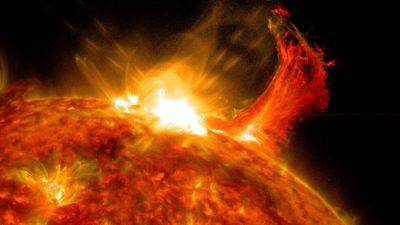
Solar flare erupts on Sun, detects NASA; blackouts over Australia, Solar storm likely
Despite multiple close calls, we have been quite lucky when it comes to solar storms. Even as multiple solar flares have erupted over the last 10 days, only one released a coronal mass ejection (CME) that made its way to the Earth. However, things can now change with the latest eruption that took place in the sunspot region AR3452. The NASA Solar Dynamics Observatory detected the eruption, and as per reports, it took place on the eastern limb of the Sun. If there was any CME directed towards the Sun, there would be another solar storm event in the next 48 hours.
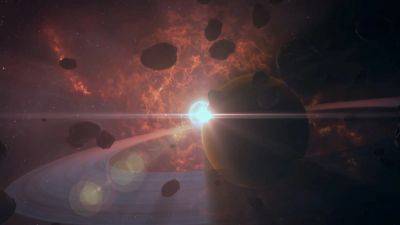
Asteroid to come closer than the Moon! NASA reveals details of close approach
To discover, monitor and study asteroids in space, NASA has several space telescopes and ground-based observatories in place. These include the famous Hubble Space Telescope and the new James Webb Space Telescope. Moreover, spacecraft such as Dawn, OSIRIS-REx, and Hayabusa2 have also helped in studying these ancient space rocks. As of now, there are 1,298,210 known asteroids in space and while not all of them are dangerous, some of them can get knocked off their orbit due to interaction with a planet's gravitational field such as Jupiter, and head towards Earth for potential impact. Therefore, to remove the uncertainties around the asteroid's approach, it is imperative that we track them.
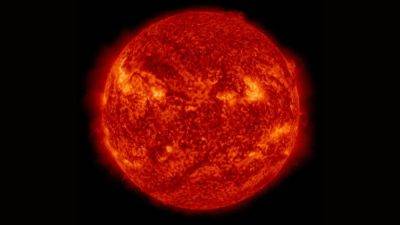
Solar flare alert! NASA observatory reveals threat of M-class flare
The Sun's activity is expected to increase in the coming months as we approach the Solar Maximum, the period in the solar cycle where activity is at its peak. It is expected to arrive in 2024 or 2025, and the number of sunspots has already exceeded previous predictions. During this peak, the planet could face CMEs, solar flares, solar storms, and other particles with potentially disastrous consequences. In a new development, NASA's Solar Dynamics Observatory (SDO), which carries a full suite of instruments to observe the Sun, has recently revealed that Earth could be in the firing line of a sunspot and dangerous solar flares could be hurled out that could have the potential to wreak havoc.
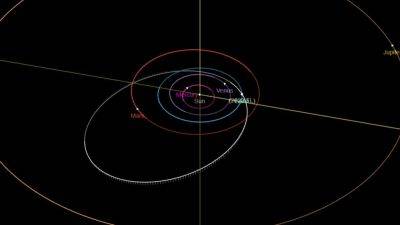
140-foot asteroid set for a close call with Earth, reveals NASA
Did you know that artificial intelligence (AI) is aiding in the discovery and study of asteroids? After aiding various industries across sectors such as education, healthcare, engineering and more, AI could also potentially help protect Earth against asteroids. According to a study published by the University of Washington, an algorithm, named HelioLinc3D, helped researchers discover a potentially hazardous asteroid. Asteroid 2022 SF289, which is almost 600 feet wide, was discovered during the algorithm's test in Hawaii and has not been deemed as dangerous in the foreseeable future.
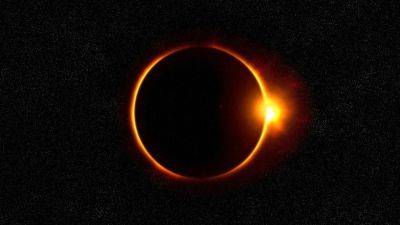
Annular Solar Eclipse 2023: Check NASA guidelines to protect your eyes and where to watch
The annular solar eclipse 2023 will take place on Saturday, October 14. A celestial spectacle that will grace the skies above the United States. It is also known as a ‘ring of fire' eclipse. During this breathtaking event, the Moon will pass between the Earth and the Sun, creating mesmerizing phenomena. If you are planning to watch this cosmic display, it's crucial to remember that observing a solar eclipse requires the utmost caution to safeguard your vision. Lance Bass, a well-known figure, has teamed up with NASA to share some invaluable safety tips.

Shocking find by NASA Parker Solar Probe; Lightning on Venus may be meteors crashing
NASA is running various space missions to find out the secrets of the universe. One of the major missions of the space agency is the Parker Solar probe. The spacecraft has been tasked with orbiting the Sun to find out crucial data around sunspots, solar flares, coronal mass ejections (CME), and solar storms. However, in its journey, it routinely flies past Venus. And this has allowed Parker Solar Probe to possibly find the reason behind one of the biggest phenomena that has confused scientists for years. It found that the lightning on Venus may not actually be lightning at all. In fact, they are likely to be meteors that are striking the planet and are burning up in its atmosphere.
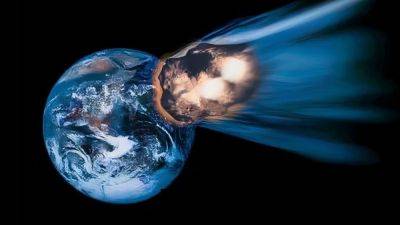
NASA reveals bus-sized asteroid rushing towards Earth today! Check speed, size, other details
NASA has several space and ground-based telescopes in place to discover, track, and study asteroids. But if you're a budding astronomer, you can help the space agency too! NASA's new Daily Minor Planet Project allows astronomers and skywatchers to help discover new asteroids and track them in data sets. To capture asteroids, the Daily Minor Project uses the NASA-funded, University of Arizona-based Catalina Sky Survey which captures nearly 1000 images every night. Due to this volume, NASA scientists fall short of personnel to study these images. After looking at the image, you just have to click on a yes or a no button and add a comment if necessary, before moving on to the next image.
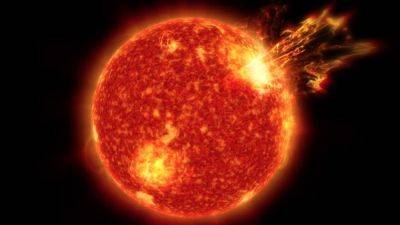
Gigantic CME headed for the Earth, can spark solar storm soon; NASA records the explosion
Yesterday, it was reported that October could see the same amount of solar activity as the previous month. Currently, there are eight different active sunspot regions on the Earth-facing side of the Sun, and any one of them exploding could send terrifying coronal mass ejections (CME). In fact, that is what happened on October 3, when a sunspot exploded and caused a solar flare to erupt, which in the process, hurled a massive CME towards the Earth. Now, as per a NOAA forecast, this CME is expected to strike our planet on Saturday, October 7. Further, NASA has also shared a video of the event that shows the scary moment when the explosion takes place and the CME releases.

Prada to the Moon: Fashion brand to work on next-generation spacesuits for NASA
Astronauts on an upcoming NASA mission will head to the moon in style, decked out in Prada spacesuits.
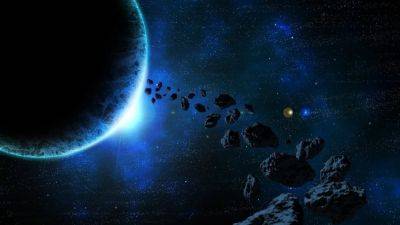
130-foot asteroid hurtling towards Earth for a close approach TODAY, says NASA
Asteroids often pass Earth at close distances, posing a threat to the planet with their terrifying approaches. Most of them might seem like they're just floating rocks in space, but did you know asteroids have differing compositions? These space rocks can be classified into 3 types based on their structural composition. The most commonly found asteroids are S-type, which are made up of carbon-rich substances. On the other hand, S-type asteroids are made up mainly of silicate minerals and are less common. M-type asteroids are the least prevalent and they are primarily composed of metal.

3 MASSIVE solar storms smacked into Earth; More to come? NASA reveals the truth
Yesterday, an unstable sunspot named AR3450 was spotted coming towards the Earth. It was estimated that any explosions within this region that could lead to a coronal mass ejection (CME) would be geoeffective and could lead to a solar storm event. However, it has not gone off so far and no solar flare activity has been noted. While astrophysicists are keeping an eye on it, a new report has highlighted that the month of September witnessed as many as three separate solar storm events, with two of them being significantly intense to the point of reaching the mid-latitude regions. With the peak of the 11-year Solar Cycle, the Solar Maximum, approaching soon, will the month of October be worse? We take a look at the data from the NASA Solar Dynamics Observatory (SDO) to know what's coming our way.

Asteroid bigger than Brooklyn Bridge hurtling towards Earth today! NASA reveals stats
Over the course of Earth's 4.5 billion-year-old history, there have been several major asteroid impacts that have had a significant impact on the future of the planet and helped humanity to emerge as a dominant force. Perhaps the most consequential impact occurred almost 65 million years ago when a mammoth 12-kilometer-wide asteroid crashed into the surface and obliterated nearly 70 percent of Earth's species including dinosaurs. The crater where the asteroid crashed can still be found today in the Yucatan Peninsula in Mexico. Such large asteroids have the potential to cause global devastation if they crash. Fortunately, NASA and other space agencies now have an arsenal of space and ground-based telescopes to discover and track them.
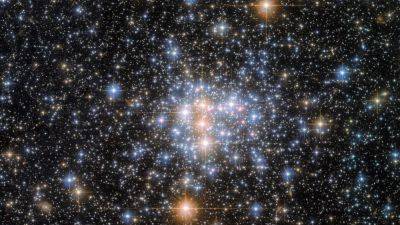
NASA’s Hubble Space Telescope snaps powerful protostellar jet at its most mesmerizing state
NASA Hubble Space Telescope has been capturing breathtaking images of space since the 1990s and over the years, its digital Stone Age instruments and technology have captured images that are simply mind-boggling. Recently, the NASA telescope has captured stunning pictures of bright protostellar jets which showcase the radiant lights of the star that will keep you hooked and thrilled. Know more about the Hubble Telescope image below.
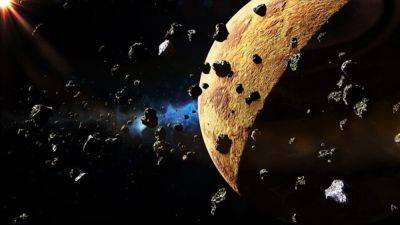
Aircraft-sized asteroid racing towards Earth! NASA reveals close approach details
NASA has been working on its Psyche mission for the last few years but hasn't been able to launch it yet. The space mission to the 16 Psyche asteroid has been delayed several times now, with the most recent happening on October 5. The $1.2 billion mission was set to launch via a SpaceX Falcon 9 rocket as part of NASA's Discovery missions but was delayed, giving NASA more time to reverify parameters that control the rocket's nitrogen cold gas thrusters. For the unaware, the 16 Psyche asteroid is made up of gold, nickel, and iron deposits and is supposedly worth more than Earth's economy.
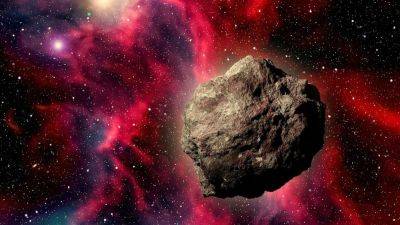
2200-foot asteroid hurtling towards Earth tomorrow! NASA reveals monstrous space rock data
Asteroids are in constant focus of most space scientists due to their potential for causing global destruction. Asteroids are space rocks that follow distinct orbits in the vastness of space. According to NASA, some of these ancient cosmic rocks pose a potential threat of colliding with Earth. Although most of them reside in the primary asteroid belt situated between the orbits of Jupiter and Mars, some of these space rocks approach Earth, with some coming within just a few hundred thousand kilometers of our planet. This proximity raises concerns about the possibility of these asteroids impacting Earth. And now, NASA has informed about a humongous asteroid that is traveling towards Earth rapidly. This is a 2200-foot asteroid that has been designated as 349507 (2008 QY).
Popular Topics
Our site gametalkz.com offers you to spend great time reading NASA latest Tips & Guides. Enjoy scrolling NASA Tips & Guides to learn more. Stay tuned following daily updates of NASA hacks and apply them in your real life. Be sure, you won’t regret entering the site once, because here you will find a lot of useful NASA stuff that will help you a lot in your daily life! Check it out yourself!
